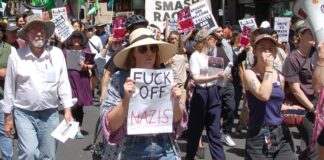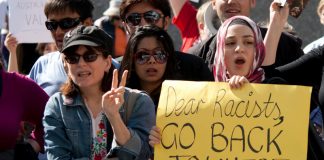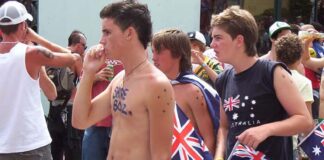John Howard’s election in 1996 brought with it Pauline Hanson and a steep rise in efforts to whip up racism—first against Aborigines and Asians but then quickly at Muslim and refugees. But through consistent campaigning, the refugee rights movement was able to turn the tide of public opinion.
Howard’s Immigration Minister Philip Ruddock initially rejected Hanson’s policy of Temporary Protection Visas (TPVs) for refugees.
In 1999, as the number of boats went from 17 (in 1998) to 86, he introduced them, and dramatically expanded detention centres—opening Woomera in November 1999.
Socialists responded by initiating Refugee Action Collectives (RAC) to counter Howard’s racism, shift public opinion and break Labor’s anti-refugee stance. It wasn’t going to be easy. The Labor leadership backed every piece of anti-refugee legislation the Liberals put up during their first six years in power.
The RAC groups had a particular orientation to organised workers in the trade union movement—firstly to provide an antidote where Howard sought to sow racism most deeply, and to tap workers’ social power. Secondly, the unions have a special connection to Labor.
We produced leaflets targeted to unionists, addressed union meetings, and invited union leaders and Labor MPs to speak at rallies—laying the basis for the formation of what was envisaged to be L-a-b-o-u-r for Refugees. It became Labor for Refugees with more of a focus on the Labor Party than we had planned, but gave us a real connection to the labour movement more broadly.
The orientation to Labor was controversial. Many in the campaign regarded the Labor Party as the enemy and wanted to protest against them in the same way we protested against Howard or Ruddock.
They didn’t understand that the party was not monolithic but had many members and even more supporters critical of the leadership but who maintained an allegiance to the party.
Our work with officials and rank and file members not only meant that refugee material was distributed on jobs and published in union journals, but that we could mobilise small contingents from unions. We were also able to push for union action at the airports to stop deportations of refugees.
At first, the protests were small. But in mid 2000, the refugees themselves pushed their way on the front pages of the newspapers when 200 broke out of Woomera detention centre.
There were two events in 2001 that polarised public opinion and pushed more people into the campaign. The first was a Four Corners program in August that dealt with escapes from Villawood and showed graphic footage taken with a smuggled camera of a young Iranian boy, Shayan Badraie, who was slowly dying inside detention.
The second event is better known—the arrival of the Tampa—also in August. The demonstration over the Tampa brought hundreds of people, disgusted with Labor’s capitulation to Howard, declaring they had torn up their Labor Party cards or that they were now voting Greens. An important minority were now actively opposed to Labor’s me-tooism.
All this led to a flourishing of refugee support groups. Within weeks ChilOut (Children Out of detention), Adelaide’s Circles of Friends, and We Are All Boat People were formed. Actors For Refugees was established in September and Rural Australians for Refugees in October. In the aftermath of Howard’s re-election in November came Labor for Refugees.
The leaflets, the fact sheets and other efforts meant that slowly more people were armed with the facts to counter Howard’s lies.
Despite the Pacific Solution the movement continued to grow, fuelled by the outrages and resistance inside Howard’s hell-holes. The dramatic Easter 2002 break out at Woomera again pushed the issue onto the front pages.
Having an impact
The campaigning began to produce shifts in the Labor Party. Every state Labor conference in 2002 and 2003 carried a resolution supporting Labor for Refugees’ demands.
There were cracks in the Liberal government too, with some backbenchers becoming outspoken critics of Howard’s anti-refugee policies.
In 2002, for the first time since 1996, Labor opposed a piece of Howard government refugee legislation—an attempt to excise more islands from the Migration Act. Howard withdrew the legislation rather be defeated in Parliament.
Slowly but surely, the grassroots campaigning swung public opinion against Howard. Newspoll records show that between 2001 and 2004, the number of people who thought some or all asylum boats should be able to land went from 47 per cent to 61 per cent.
By 2004, the government was forced to ease conditions in detention. Many long-term refugees were released—albeit on less than adequate “return pending”= visas. Children and families were also released from detention.
But the overall policies remained in place. While Labor had also shifted, it too was still committed to maintaining mandatory detention and off-shore processing.
Howard was unable to play the refugee race card in the 2007 election, and many people voted Labor in the hope that they would embrace a humanitarian policy. Those hopes have been dashed. But tens of thousands had been part of the campaign—and many are now rejoining it. This year’s World Refugee Day rallies were the biggest since Labor’s election.
The lessons of fighting Howard last time show that with patient work it is possible to shift public opinion and force governments to back down.
That experience stands the campaign in good stead for the fight we now have with Labor in power.
By Ian Rintoul





